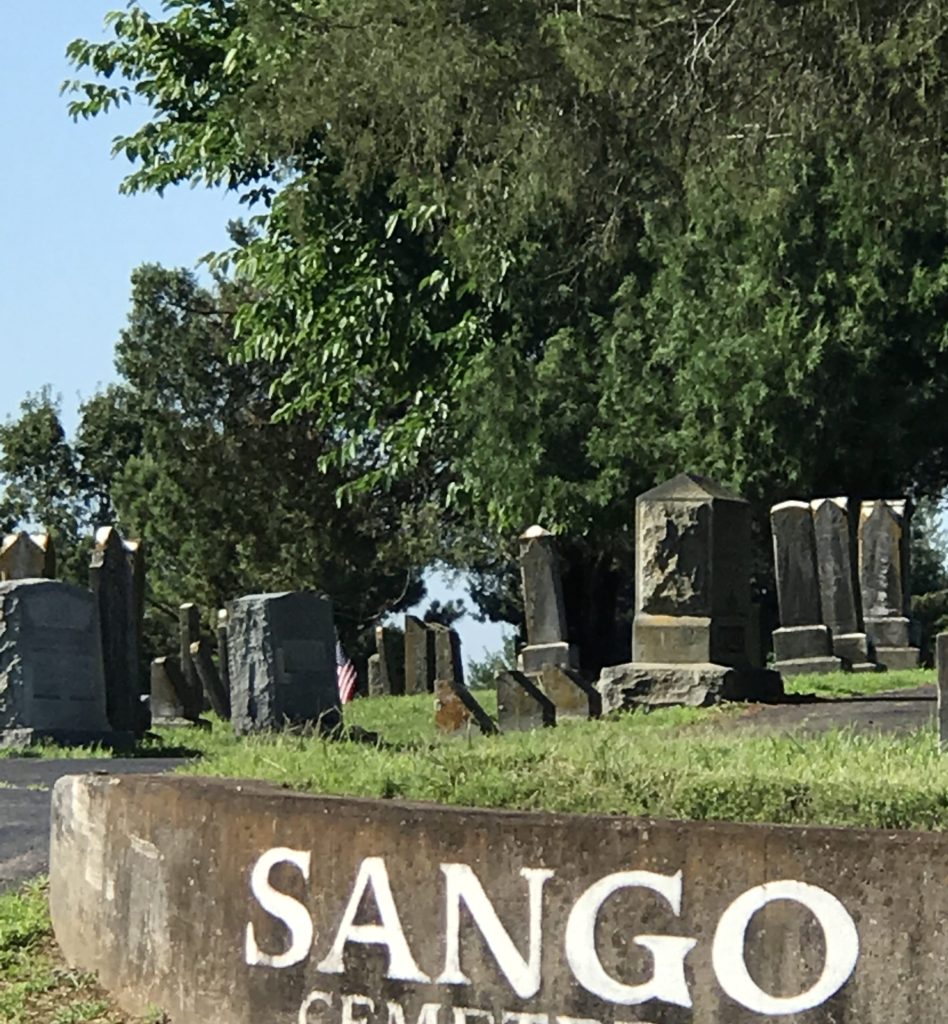THE ORIGIN OF THE NAME “SANGO”
As we searched for information about the Sango area, we were very surprised to find no single, authoritative source for the history or even the actual location of the community. We did find scattered articles that mention snippets of information, but rarely did we come across any definitive origin articles.
We agree that throughout our journey of “Searching for Sango,” the most plausible discovery lies in the research of Ryan Wadliegh. At his request, we would like to credit and properly cite his continued research journey at www.ryanwadliegh.com.
We discovered that, in 1840, George Coffee Halliburton (1816-1878) purchased 100 acres of land in Montgomery County from his brother, William. In addition, he was granted 200 acres for his service in the Indian War. (As a note, we are currently researching title and deed records for the original document showing this bound land transfer to share.)
At about the same time, George married Mary Grant and began expansion of a log cabin that was part of his purchased land. Records indicate that this cabin was originally built and owned in 1790 by the Jett family. Today, the George Halliburton home still stands on Sango Drive.
George became a large plantation owner and built a general store on what the records indicate as being the “Halliburton Crossroads.” In addition to a variety of supplies, he carried ginseng root at the store.
Ginseng root was a very sought after plant of the time as it was known to have healing qualities. Story has it that Halliburton’s general store was the place to “go get your gin-Sang.” Through time, dialects and general modifications to colloquialism, the term Sango was derived from this common saying.
(Of note: This seems to be the most widely accepted theory amongst locals with farming history in the area. We simply could not substantiate any other theory we encountered.)
It wasn’t until much later that we see any official record of the community being named something other than “Halliburton Crossroads.” Samual Nichols, the nephew of George Halliburton, became the first postmaster of the Saugo post office in 1881. The spelling was in error. However, the National Archives lists the appointment of the Saugo post office with the incorrect spelling.
In 1883, Samual T. Halliburton (1858-1901), son of George, became the next postmaster. During his appointment, the spelling was corrected. In 1889, Sango post office was the officially listed name in the National Archive records. Sango post office remained until 1906.
In the “Searching for Sango” project, we believe that we now have a better start to understanding Sango. We have an established origin story with definitive government documentation that corresponds to the narrative.
